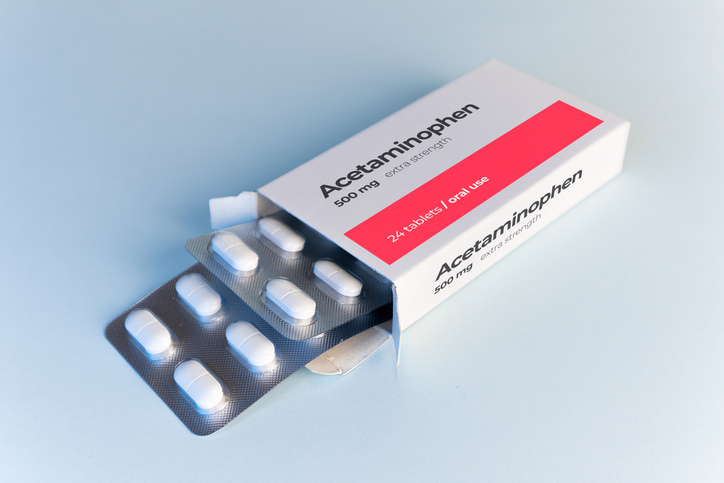
Final results from the PsABio study of the long-term use of ustekinumab and tumor necrosis factor inhibitors (TNFis) for the treatment of psoriatic arthritis (PsA) found persistent efficacy with either treatment. The results were published in Annals of the Rheumatic Diseases.
Ustekinumab is a fully human immunoglobulin G1 monoclonal antibody that blocks the p40 subunit of IL-23 and is a non-TNFi biological disease-modifying antirheumatic drug (bDMARD). This study evaluated treatment persistence and clinical effectiveness. Persistence was defined as the time between initiation of first in-study bDMARD and either last dose (plus one dispensing interval or stop/switch to another bDMARD) or study withdrawal. Clinical effectiveness was defined as the achievement of a low disease activity (LDA)/remission status via the clinical Disease Activity for PsA (cDAPSA) measure and minimal disease activity or very LDA (MDA/VLDA).
The prospective, observational study enrolled 934 patients with PsA who received either ustekinumab or any approved TNFi (including biosimilars) as a first-, second-, or third-line treatment. “The choice of bDMARD therapy was made by the treating rheumatologist, reflecting real-world clinical practice,” the authors noted.
Patients were followed for 3 years, with assessments every 6 months. The average patient age was 49.8 years, and 44.7% of patients were male. Due to the COVID-19 pandemic, the study was closed prematurely, and 63 patients (7%) did not complete the minimum follow-up at the time of analysis. Their data was still included in the safety analysis.
The authors noted clinically relevant differences in baseline characteristics between treatment groups. The ustekinumab group tended to be older, have more comorbidities, and have greater incidence of severe skin involvement at baseline than the TNFi group. This group was also more likely to have been exposed to a previous bDMARD.
Persistent Use of bMARDs at 3 Years
Over the course of the study, treatment persistence was similar between those patients on ustekinumab and those on TNFis. Specifically, 83.6%, 61.5%, and 49.9% of patients stayed on ustekinumab, and 80.0%, 62.1% and 47.8% of patients stayed on a TNFi for 1, 2, or 3 or more years, respectively.
The proportion of patients still on their initial treatment at final follow-up was 49.9% for ustekinumab and 47.8% for TNFIs, and the mean duration of initial treatment was 24.7 and 24.1 months, respectively. The risk of stopping/switching bDMARDs was similar between groups. The reasons for stopping/switching bMARDS were related to safety/tolerability in 17% and 24% and treatment effectiveness in 83% and 76%, respectively.
Notably, patients with severe skin involvement who received ustekinumab had a longer duration of initial treatment compared to the overall group, patients on ustekinumab with less severe skin involvement, and patients receiving TNFis with severe skin involvement. Significant skin improvement at 1 year was associated with a higher treatment persistence.
Treatment modality was also associated with persistence. Ustekinumab monotherapy was associated with a lower risk of stopping/switching than TNFi monotherapy (hazard ratio[HR]=.65). On the other hand, TNFi combination therapy (with methotrexate) was associated with greater treatment persistence than an ustekinumab combination (HR=1.35). Additionally, ustekinumab monotherapy patients persisted longer than ustekinumab combination therapy, “while the opposite was observed in the TNFi group,” the authors wrote. First- and second-line bMARD treatments persisted longer than third-line treatments.
bMARDs Safety and Effectiveness
At the 3-year follow-up, persistent treatment was associated with a clinically relevant improvement in both treatment groups. In the overall population, cDAPSA LDA/remission rates were 58.6% and 31.4%, respectively, in the ustekinumab group and 69.8% and 45.0% in the TNFi patients. MDA/VLDA rates were 41.4%/19.2% with ustekinumab and 54.2%/26.9% with TNFis.
The authors noted that more patients treated with TNFis achieved the effectiveness outcomes, though the ORs for achieving treatment targets were overlapping. Both treatments demonstrated comparable efficacy in improving in swollen joint counts over the study period, as well as comparable decreases in the number of patients with dactylitis.
Thirty-five percent of ustekinumab-treated patients and 39.7% of TNFi-treated patients experienced at least one adverse event (AE). At least one serious AE occurred in 6.3% and 7.2%, respectively. Malignancies were recorded in 0.6% and 0.7%, respectively, after year 1.
Patients treated with ustekinumab had a lower rate of clinically relevant AEs, though this relationship was not established for serious AEs. Rates of infection were also lower among the ustekinumab group. Overall, the authors reported good long-term safety profiles for both treatments in patients presenting with several comorbidities.
Though the study’s non-randomized design precludes conclusions about causality, the authors wrote, “The benefit of the data presented here is that they are long-term, real-world results of patients suffering from PsA with underlying comorbidities, and receiving ustekinumab and TNFi treatment, respectively, and as such may be more representative of what may happen in clinical practice.” They added that, based on these findings, “patients with high levels of skin involvement, and in whom methotrexate use is contraindicated, may be attractive candidates for treatment with ustekinumab rather than TNFi.”







 © 2025 Mashup Media, LLC, a Formedics Property. All Rights Reserved.
© 2025 Mashup Media, LLC, a Formedics Property. All Rights Reserved.